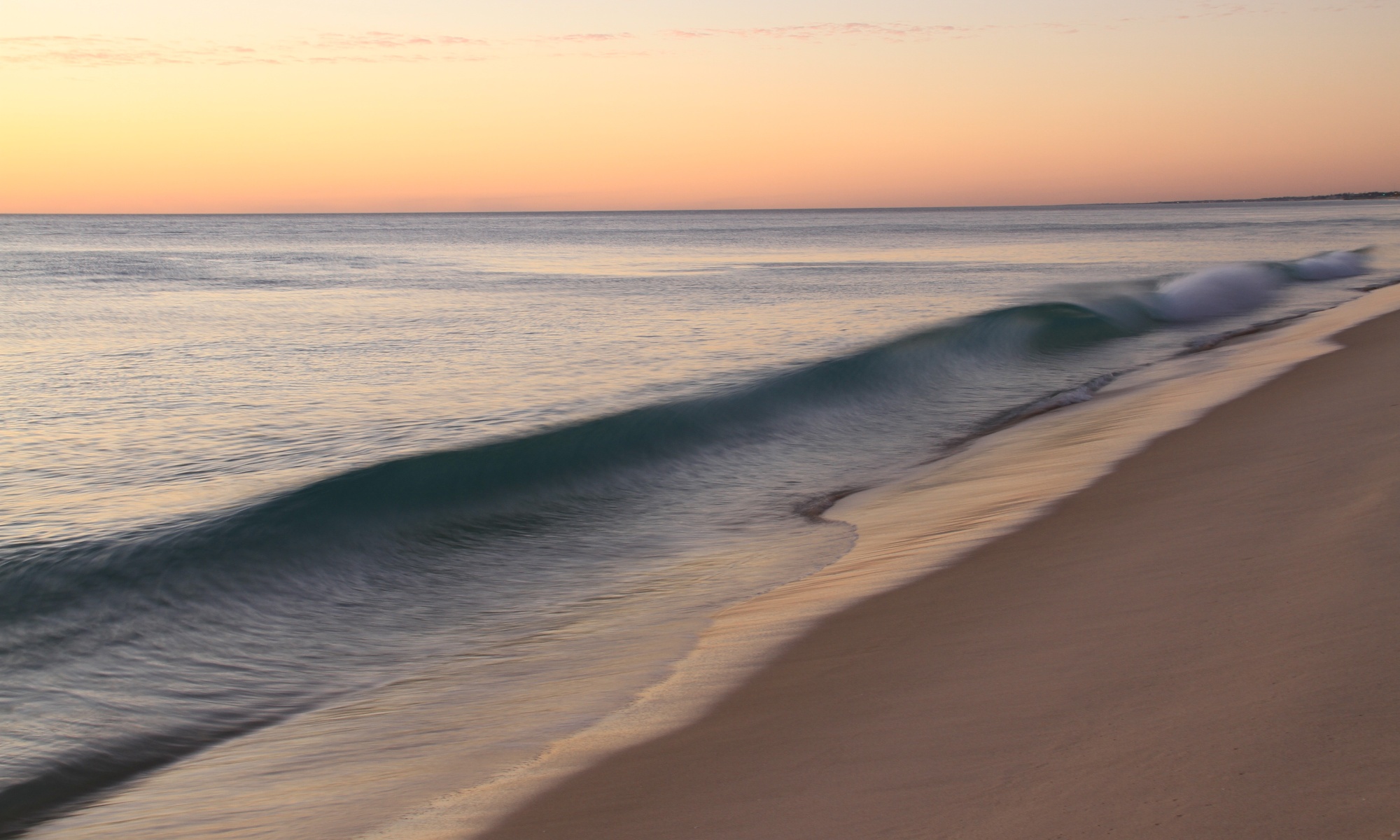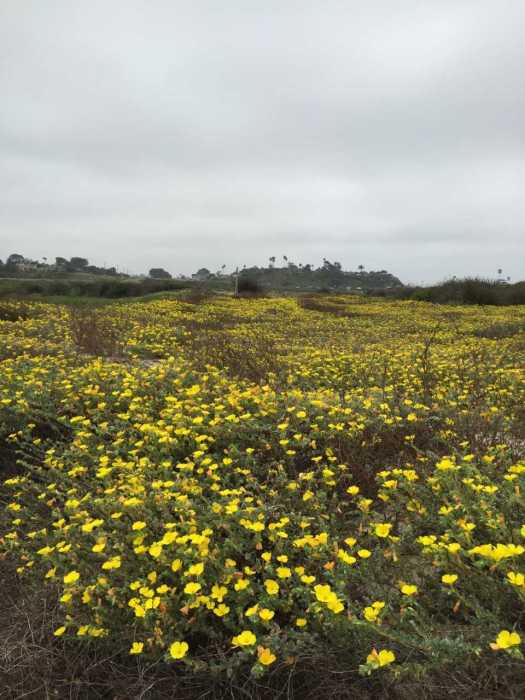
[Image: Dune Primrose (Oenothera deltoides). San Diego, April 2020. Source: Professor Zembal]
“Building expertise and designing creative strategies requires firing the few active neurons I have left in unique combinations, frequently. It is most important as a Field Biologist working with and responsible for, other Field Biologists not to lose that which separates us from mere mortals. Practicing field biology means time in the field, what one gets by reading, conversing, and study is important but only a piece of it, less than half. It has always been a struggle, balancing the field with office time but a common dilemma; specialized trades must be practiced to develop and maintain ones’ working knowledge but you must also author, review, sign, meet, collaborate, yada yada. An outing is planned with a purpose, accompanied by anticipation, expectation, and sleep-interrupting anxiety; it is executed adaptively with observation, interpretation, and documentation. The findings add to a growing database, prove or dispel theories, leading to theory modification, additional scrutiny, and sometimes a new paradigm.
In the struggle to maintain or expand expertise, I spent a recent day off in a coastal wetland in San Diego, assisting with surveys of the wetland birds. Many of these kinds of birds are reclusive and documented by their vocalizations more than sightings. A birds’ call can yield more information than just a sighting, if the call for example is associated with territoriality and breeding. It takes regular practice to learn and remember all the calls of all the birds, exercising that expertise so that the mental muscle doesn’t turn to flab. This particular lagoon is undergoing “restoration” and the trails around it are currently closed, so human traffic was down, slightly. I found that by coughing into my mask as yet another jogger approached, they mostly reversed course and social distancing was well maintained even on the narrow parts of the trail. I walked miles of trail that day, focused upon the secretive birds of the wetland but this tale is more about encounters along the way and the random musings those conjured.
There are a lot more flowers when it rains! Wildflowers were in abundant bloom still that late April day, with the unusually late, heavy rains of 2020. The last time I remember rain big enough to ruin an April fishing trip on the Sespe, actually Piedra Blanca was in the 1960s! This day, there were golden, Sun Cups; purple-ribbed, Blue-eyed Grass; blue, Caterpillar Flower, Lupines, and Wild Canterbury Bells; red, Indian Paint Brush, Scrophularia, and Fuchsia-flowered Gooseberry; white, Popcorn Flowers and Wild Cucumber, the complex comprising a rainbow carpet. Then, amongst the wildflowers was a small stand of Coast Barrel Cactus, a rare San Diego County endemic that I had never observed in this wetland before. On the coastal dunes were fields of yellow Dune Primroses. Our beach dunes were once covered in spring wildflowers but one common shrub has spikey fruits, bare feet are no match.
Unusually heavy, abundant rains wash away soil! A rare find that April day was of a woven tube, D-shaped lid still attached. A colony of CA Trapdoor Spiders had been exposed by runoff, their tubular chambers left suspended above the ground surface and a few had broken off. Their dwellings are woven silk inside, clay-lined outside and about ¾ inches in diameter, perhaps 8 inches deep. The lid is usually closed unless the female occupant is watching for a passing, meal-sized arthropod; then, a couple of spider legs hold the lid open, a mere slit, vigilant hunter inside, ready to pounce. Trapdoor spiders look like small tarantulas, but nearly hairless; glossy black but with a brown abdomen. They are dug up and eaten themselves by a variety of small mammals and are attacked by Tarantula Hawks, a colorful, large wasp that stings to paralyze them, lays a single egg upon them, and leaves them to be consumed slowly by the larval wasp. These spiders don’t particularly like being handled, are not prone to biting but apparently, the bite is a bit painful, although not otherwise injurious.
Abundant rain grows more plants, insects, small mammals, and predator populations respond; some immediately, some in delay. Bunny is down and still warm, without a mark showing. I cautiously examined the narrow game trail leading to and away from the Cottontail for signs of a telltale sinuous track. There was none to follow to the perpetrator’s ambush hideout but flipping the lifeless Lagomorph revealed two tiny blood spots on the flank. As suspected, a Southern Pacific Rattlesnake had made this kill but either lost the scent trail leading to its meal or was biding its time. The sign was quite fresh but poking around in the vicinity did not reveal the serpent; time was getting short, another photo op lost.
Resident nesting birds don’t often experience heavy April rains! Regularly in spring, a number of small white eggs can be found predated or just lying about randomly; the number found this April was greater, perhaps dislodged from nests by wind and torrent. I generally suspect most to be Mourning Dove eggs; their nests are avian embarrassments, comprised of a scant number of barely interwoven twigs placed wherever. More often than not, the eggs are visible through their minimalist nests. Yet, here is a successful So Cal native bird; how so? Well, they are wide-ranging; nesting almost anywhere, even hanging baskets on front porches; lay only two eggs but take meticulous care of those youngsters until they fledge; and they eat only seeds, producing crop milk that is fed to the nestlings.
Heavy late rains can wreak havoc with nesting birds! The temperatures warm, days lengthen, and breeding hormones build, triggering the annual cycle. Some birds could be sitting on eggs already when a late storm hits, plummeting temperatures with cold drenching rains and torrent-driven winds; many early nests likely didn’t make it. Odd weather would affect both resident and migratory birds that nest here annually. Some of our nesting species are habitat generalists like the Mourning Dove, a resident; some are specialists like the endangered CA Least Tern, a summer resident that nests only on open sandy beaches on the coast well north of their wintering range. Then, there’s the Ca resident I heard announcing ownership of a coastal breeding plot, likely after having nested once this season already but in the desert. The Phainopepla is an iconic south-westerner, tied intimately to Desert Mistletoe berries and the supporting Mesquite stands. That is until earlier breeding is complete in the desert, then off to the coast, they fly to breed again in summer. It was only late April when I saw them on the coast; was the desert round of breeding a bust in 2020?
These incidental observations had little to do with my primary purpose on that late April day, they just happened along the way; what a great field day, I am recharged but wish you could have been there too!” – Professor Zembal

[Image: San Diego Barrel Cactus (Ferocactus viridescens). San Diego, April 2020. Source: Professor Zembal]
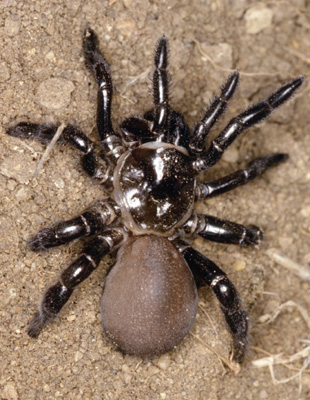
[Image: California trapdoor spider (Bothriocyrtum californicum). Source: UCI Biology, Dr. Peter Bryant].
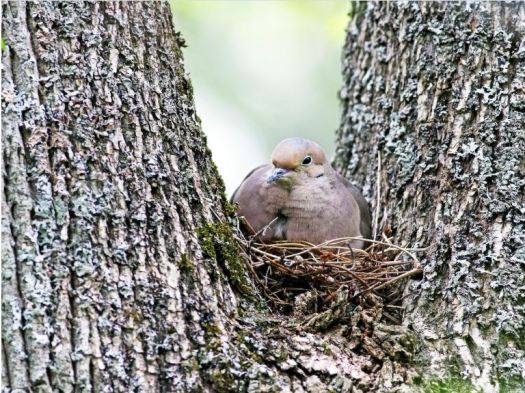
[Image: Mourning Dove (Zenaida macroura) nest in California. Source: Birds of The World Database, Cornell Lab of Ornithology. Jay McGowan, 2015].
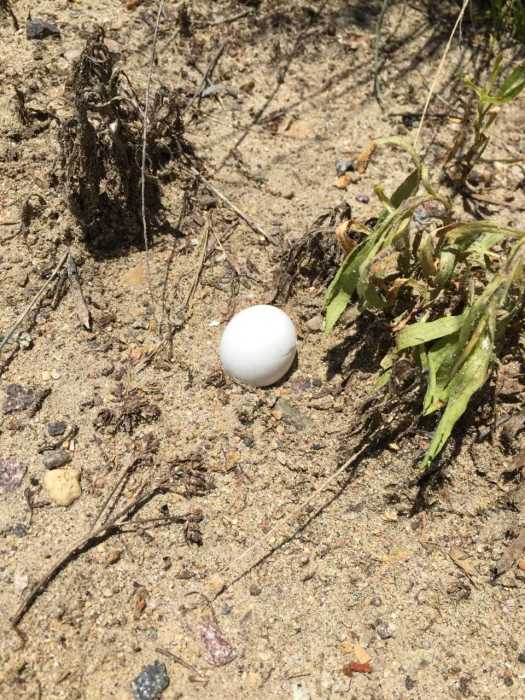
[Image: Mourning Dove (Zenaida macroura) egg. San Diego, April 2020. Source: Professor Zembal.]
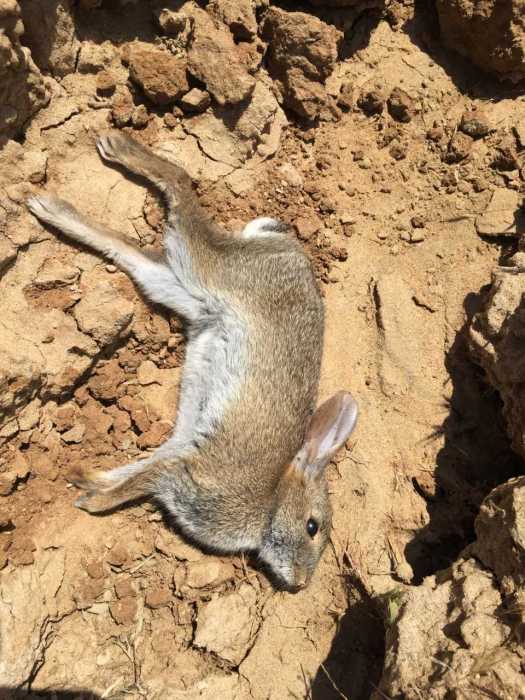
[ Image: Desert cottontail (Sylvilagus audubonii) . Preyed upon by a Southern Pacific rattlesnake (Crotalus oreganus helleri). San Diego, April 2020. Source: Professor Zembal.]
